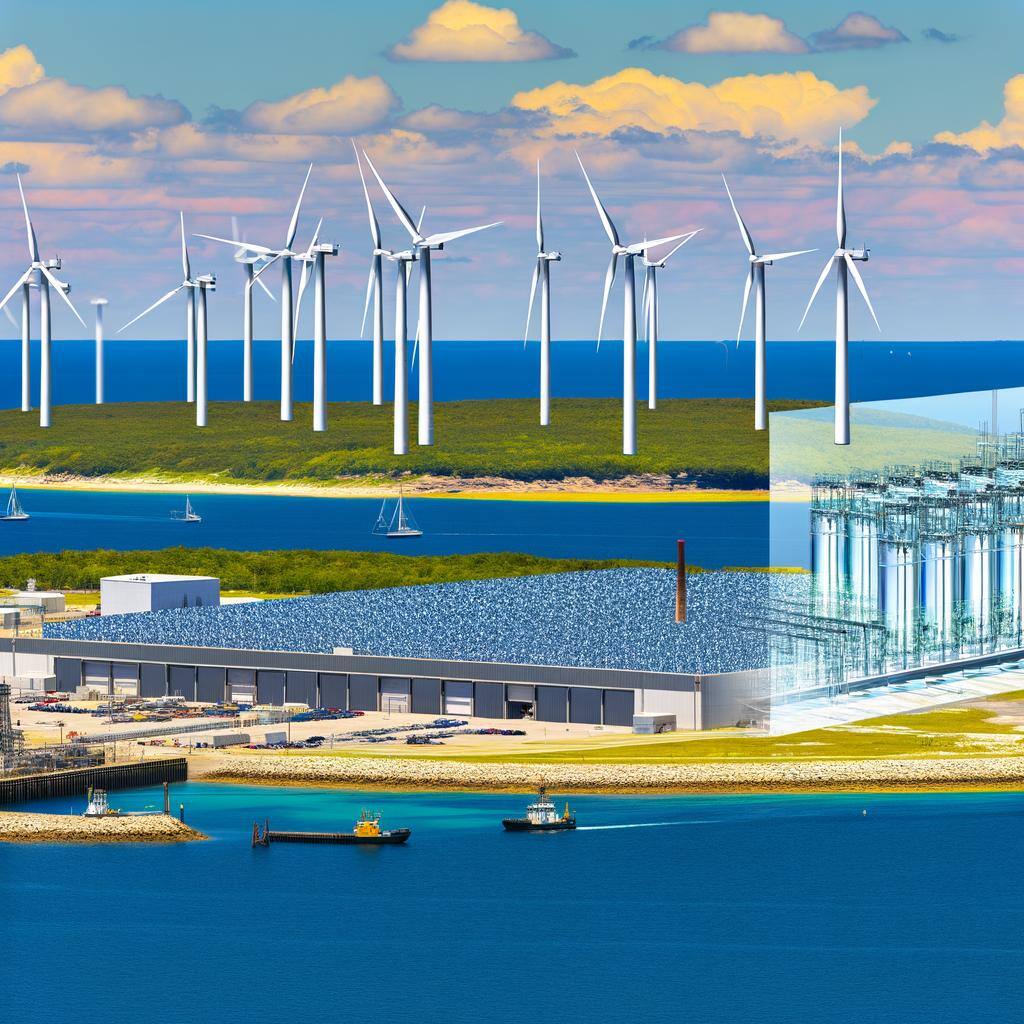Granite Shore Power CEO Jim Andrews Showcases Portsmouth Schiller Station as Key Component to New Hampshire Wind Power
Andrews discussed offshore wind infrastructure at EBC 6th Annual New Hampshire Offshore Wind Conference
(Concord, NH) - On October 16, 2024, Granite Shore Power CEO Jim Andrews participated in the Environmental Business Council of New England’s 6th Annual New Hampshire Offshore Wind Conference. Andrews’ presentation focused on the Granite State’s burgeoning offshore wind industry and the vital role that Granite Shore Power (“GSP”) will play in helping to make wind power a reality for New England. Specifically, Andrews talked about GSP's transformation of Schiller Station into a battery energy storage facility, which would provide storage for the wind power being built off the coast of Martha’s Vineyard and in the Gulf of Maine.
“The New Hampshire Seacoast is an area of high energy demand, and it’s well-positioned to take advantage of the potential sites for offshore wind,” said Andrews. “By repowering Schiller Station to a battery storage system, we will be able to provide reliable, carbon-neutral power to support the peak energy demands of New Hampshire residents every single day.”
GSP’s Schiller Station will be repowered to a battery energy storage system (BESS) called Jacona II. BESS is an optimal dispatchable resource for supporting decarbonization efforts when located in proximity to the load demand they are servicing. The Schiller Station, located on the Seacoast in Portsmouth, provides an ideal opportunity to site a critically needed resource utilizing existing infrastructure to meet reliability needs sensibly.
It is estimated that the coast of New Hampshire has enough offshore wind potential to supply 2,600 MW of clean energy to the region's power grid, enough to power the entire Granite State, according to Clean Energy NH. Offshore wind developments can provide significant investment in the state's economy and offer a suite of well-paying jobs across a suite of supporting industries.
“This is a pivotal moment, as we embark on this journey to build a cleaner energy future. GSP has a unique opportunity to help address New England’s reliability challenges, by creating an energy storage surplus that dispatches power when and where it’s needed,” added Andrews. “This project will be a major step forward in the region’s transition to the next generation of energy resources.”
Andrews noted the need for significant investment to make this transformation come to fruition. “The offshore wind sector requires significant coastal infrastructure for manufacturing, construction, marshaling, and operations and maintenance,” Andrews stated. “New Hampshire needs direct investments in these clean energy projects for the state to benefit from decarbonization efforts and the economic growth possibilities that come with them.”
In March of this year, GSP announced the voluntary closure of operations at Schiller Station and at Merrimack Station, New England’s last remaining coal-fired plant, facilitating the creation of first-of-their-kind “Renewable Energy Parks” in the state of New Hampshire. The transformation of these power plants into new, clean energy facilities marks the end of coal-fired generation in New England and facilitates exciting new economic growth at each location.
GSP’s decision to set a firm closure date for coal-fired operations at both Merrimack and Schiller was part of the company’s long-standing repowering plan. The transformation of these power plants into new, clean energy facilities will mark the end of coal-fired generation in New England and facilitate exciting new economic growth at each location.
“Our transformed facilities will continue providing reliable electric generation to Granite Staters. This is a bold step forward and making good on our promise to transition our coal-fired plants to clean energy facilities, meeting the changing needs of the region,” concluded Andrews.


